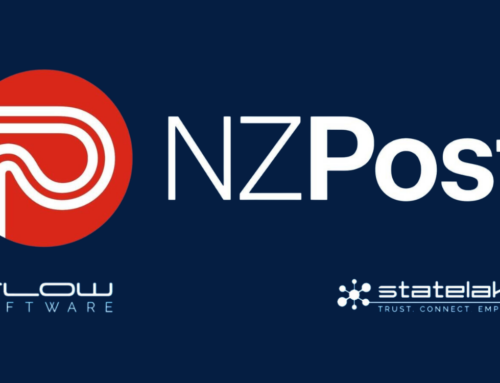

CDB stays state-of-the-art with Flow
With the right software, amazing efficiency outcomes are possible. The CDB warehouse, one of New Zealand’s busiest, is proof of that fact, as with 1400 line items stored on 10,000 pellets and shipping 250 orders a day, the entire warehouse operates with only six full-time staff…
Formed in 2000 to distribute Toshiba batteries and SKC media, CDB has evolved to become NZ’s largest importer and marketer of electrical accessories, lighting, and heating appliances. Today the company supplies leading chains like The Warehouse, Mitre 10 and Bunnings with iconic brands like Goldair & Sodastream, in addition to a huge range of other quality products in the electrical goods & accessories market. In 2006 the company relocated to a purpose built, state-of-the-art distribution center on Auckland’s North Shore.
Company director Andrew Springford says CDB’s philosophy had always been to maintain leading edge technology and facilities. This philosophy was applied to the planning and construction of the new warehouse, he says, and soon after the facility opened CDB’s management team set about extending that vision to enhance the company’s IT solutions.
The first step, he says, was implementing electronic data interchange (EDI) between CDB and its customers. With many large NZ enterprises like Mitre 10 and Countdown now insisting on EDI, Springford says the decision to go with Flow in 2006 was an easy one given Flow Software’s experience with at Exo, (the developers of CDB’s accounting package).
“We’d been with Exo since 2000,” he says, “and when we saw the EDI features Flow could bring to Exo, it really was a no-brainer for us.”
Six years on, Springford still marvels at how Flow has made the most complicated processes seem so easy.
“Everybody has got different formats and ways of doing things,” he says. “But Flow has this amazing ability to sort it all out. Once you have set up the rules Flow knows which table aligns with what and orders come through the system seamlessly. So with Mitre 10 for example, they’d enter an order into their system which takes a few seconds to get sent electronically to us. If it’s a good order and the pricing and stock all match up it automatically comes out to a gun in the warehouse and one of the guys starts picking it – nobody in the office even has to see it – and Flow handles all that integration.”
System integration made easy
Springford says once Flow was integrating CDB with its external customers, the time was right to look at the company’s internal systems. At Flow, sales manager Jim Stevens recommends this ‘step by step’ approach for any enterprise embarking on an automation project.
“We don’t believe in the Big Bang theory,” he says. “Rather than fully automating everything straight away, we’d certainly advise doing it in phases. Make an improvement, get it tested and working and then move on to the next one. It’s the way we work best – and it gives the customer risk assurance as well.”
With many years of experience in warehousing, Springford needed little convincing that systems integration would deliver a step change in efficiency.
“Generally in an old style warehouse,” he says. “Staff spend a lot more time on basic administration – running around looking for stock. Either it’s there and they can’t find it, or it’s not there and their system says it is. So people are a lot less productive. Our warehouse management system (WMS) is the king of stock in our business and our Exonet system is the king of accounting. The key for us has been in integrating them.”
The positive results of the integration are indisputable. With 1400 line items stored on 10,000 pellets and shipping 250 orders a day, CDB’s distribution center is one of NZ’s busiest, and yet Springford says the entire warehouse operation now only requires six full-time staff.
“That’s how few people we need to run a very big warehouse,” he says.
Although CDB were initially attracted to Flow because of its ability to integrate with their Exonet software, Stevens points out Flow will integrate with any accounting system from any supplier.
“That’s what Flow is,” he says. “It’s middleware. It doesn’t matter what legacy systems you’ve got or how old they are.
We have over 300 customers now and 100 different applications that Flow works with – everything from MYOB and QuickBooks through to Exonet & Pronto on up to Oracle, JD Edwards & PeopleSoft. Flow protects the IT investment people have already made. It sits in the middle tying everything together and automating the business process – and means you can extend your assets further.”
The right documentation every time
While CDB prides itself on being as paper-less as possible, Springford says its clients all have different requirements in terms of the type of paperwork they want with their orders.
“Some people want a packing slip,” he says. “Some people want an invoice and sometimes they want nothing at all, they just want everything sent electronically. Countdown, for example, don’t want a tax invoice they just want a packing slip and then an invoice sent later electronically. Once the rules have been set Flow just handles all of that automatically.”
Nonetheless for every rule there is an exception and in the case of an order that can’t be matched up, he says Flow will alert staff to take corrective action.
“If that happens Flow generates an email saying ‘hey look this order tried to come through but I can’t process it, it needs some kind of intervention’. So that just pops up on someone’s screen in the office and they can take care of it.”
Of course in some specific instances, paperwork is a legal requirement. Springford observes that Flow’s automatic generation of the correct documentation for dangerous goods is a good example of how the system has automated what formally would have been a time consuming manual process.
“We ship compressed CO2 cylinders, which are a dangerous good,” he says. “So drivers need to have a dangerous goods notice when they’re transporting items like that. Flow handles that really well. It recognises a carton on a shipment is a dangerous good and it automatically generates a dangerous goods notice even when the rest of the order doesn’t require any paperwork at all. So for us it’s one less thing we have to worry about.”
Looking ahead
Renowned in its industry for the efficiency and accuracy of its distribution system, Springford says CDB continues to look for ways to improve its productivity. While he says that robotic picking isn’t likely at CDB (the product range is too diverse he says), he notes that there is a new solution in development for the recycling of Sodastream bottles, and the company will be kept busy introducing over 200 new products in the next year. Whatever happens, he says he’s confident Flow’s easy scalability will ensure the business runs smoothly.
“It’s a great solution for working out the rules and enabling our processes.”


